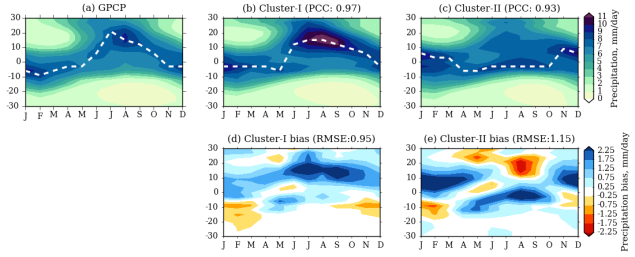Email: y.y.toh@pgr.reading.ac.uk
The Maritime Continent commonly refers to the groups of islands of Indonesia, Borneo, New Guinea and the surrounding seas in the literature. My study area covers the Maritime Continent domain from 20°S to 20°N and 80°E to 160°E as shown in Figure 1. This includes Indonesia, Malaysia, Brunei, Singapore, Philippines, Papua New Guinea, Solomon islands, northern Australia and parts of mainland Southeast Asia including Thailand, Laos, Cambodia, Vietnam and Myanmar.

The ability of climate model to simulate the mean climate and climate variability over the Maritime Continent remains a modelling challenge (Jourdain et al. 2013). Our study examines the fidelity of Coupled Model Intercomparison Project phase 5 (CMIP5) models at simulating mean climate over the Maritime Continent. We find that there is a considerable spread in the performance of the Atmospheric Model Intercomparison Project (AMIP) models in reproducing the seasonal mean climate and annual cycle over the Maritime Continent region. The multi-model mean (MMM) (Figure 1b) JJA precipitation and 850hPa wind biases with respect to observations (Figure 1a) are small compared to individual model biases (Figure 1c-j) over the Maritime Continent. Figure 1 shows only a subset of Fig. 2 from Toh et al. (2017), for the full figure and paper please click here.
We also investigate the model characteristics that may be potential sources of bias. We find that AMIP model performance is largely unrelated to model horizontal resolution. Instead, a model’s local Maritime Continent biases are somewhat related to its biases in the local Hadley circulation and global monsoon.

To characterize model systematic biases in the AMIP runs and determine if these biases are related to common factors elsewhere in the tropics, we performed cluster analysis on Maritime Continent annual cycle precipitation. Our analysis resulted in two distinct clusters. Cluster I (Figure 2b,d) is able to reproduce the observed seasonal migration of Maritime Continent precipitation, but it overestimates the precipitation, especially during the JJA and SON seasons. Cluster II (Figure 2c,e) simulate weaker seasonal migration of Intertropical Convergence Zone (ITCZ) than observed, and the maximum rainfall position stays closer to the equator throughout the year. Tropics-wide properties of clusters also demonstrate a connection between errors at regional scale of the Maritime Continent and errors at large scale circulation and global monsoon.
On the other hand, comparison with coupled models showed that air-sea coupling yielded complex impacts on Maritime Continent precipitation biases. One of the outstanding problems in the coupled CMIP5 models is the sea surface temperature (SST) biases in tropical ocean basins. Our study highlighted central Pacific and western Indian Oceans as the key regions which exhibit the most surface temperature correlation with Maritime Continent mean state precipitation in the coupled CMIP5 models. Future work will investigate the impact of SST perturbations in these two regions on Maritime Continent precipitation using Atmospheric General Circulation Model (AGCM) sensitivity experiments.
References:
Jourdain N.C., Gupta A.S., Taschetto A.S., Ummenhofer C.C., Moise A.F., Ashok K. (2013) The Indo-Australian monsoon and its relationship to ENSO and IOD in reanalysis data and the CMIP3/CMIP5 simulations. Climate Dynamics. 41(11–12):3073–3102
Toh, Y.Y., Turner, A.G., Johnson, S.J., & Holloway, C.E. (2017). Maritime Continent seasonal climate biases in AMIP experiments of the CMIP5 multimodel ensemble. Climate Dynamics. doi: 10.1007/s00382-017-3641-x